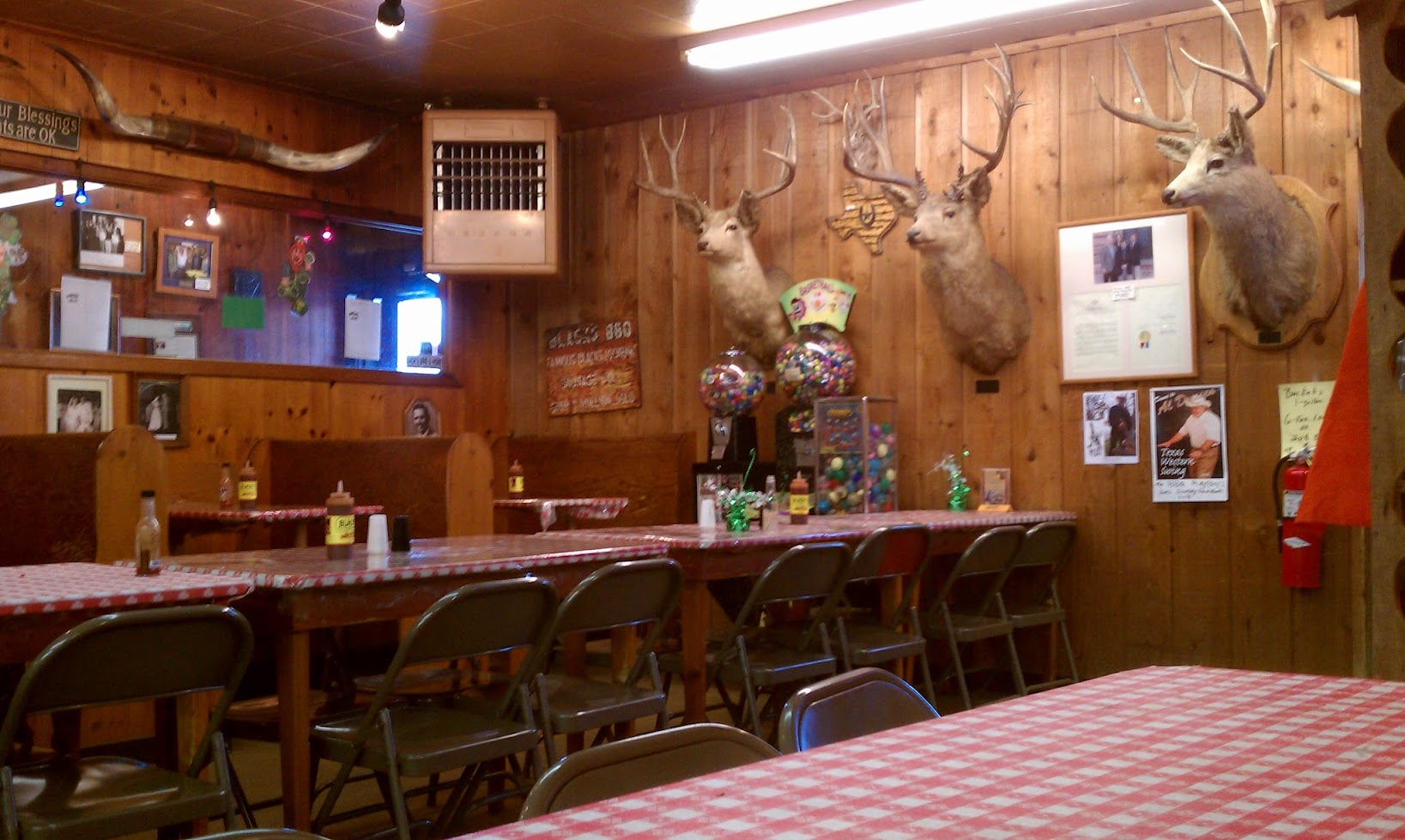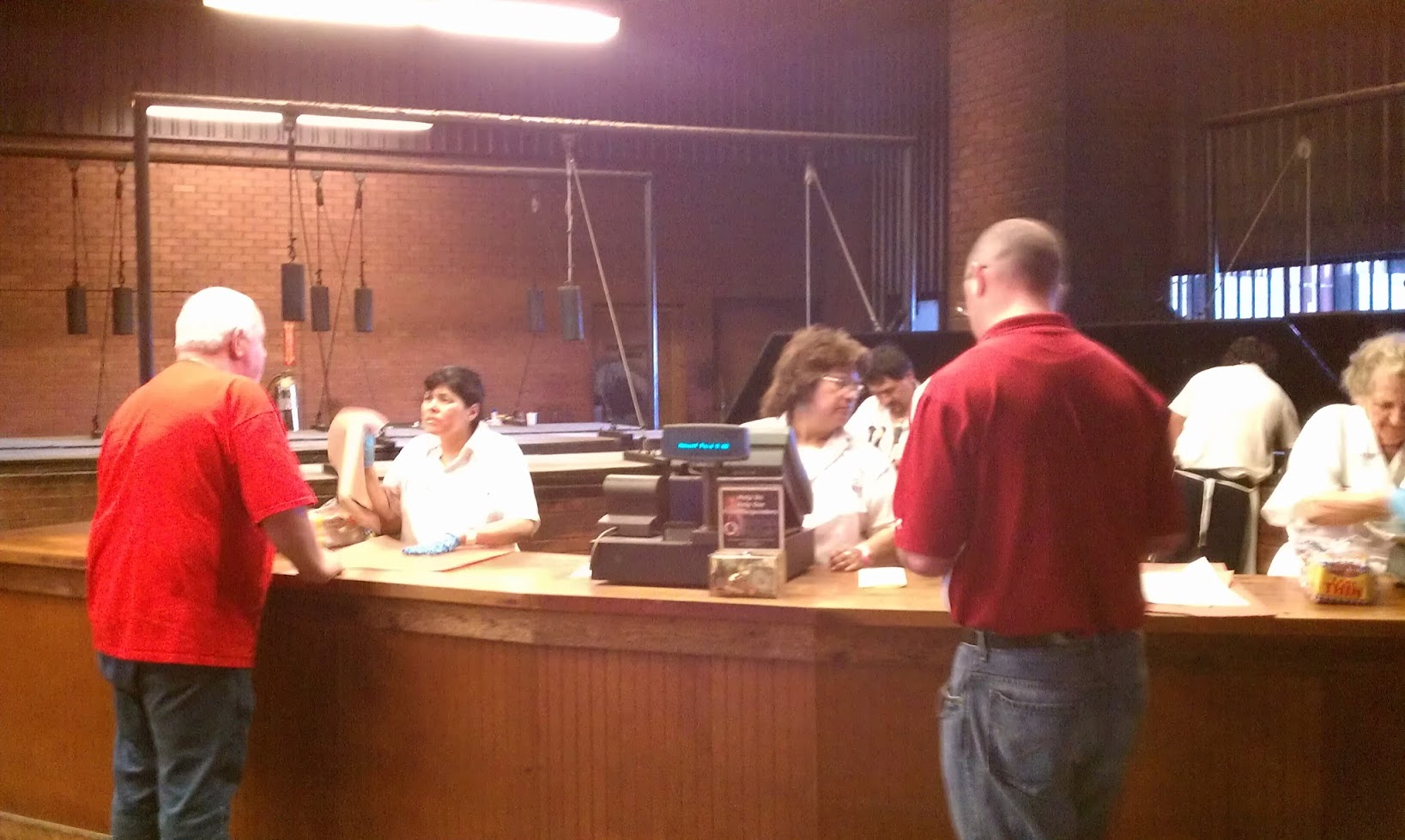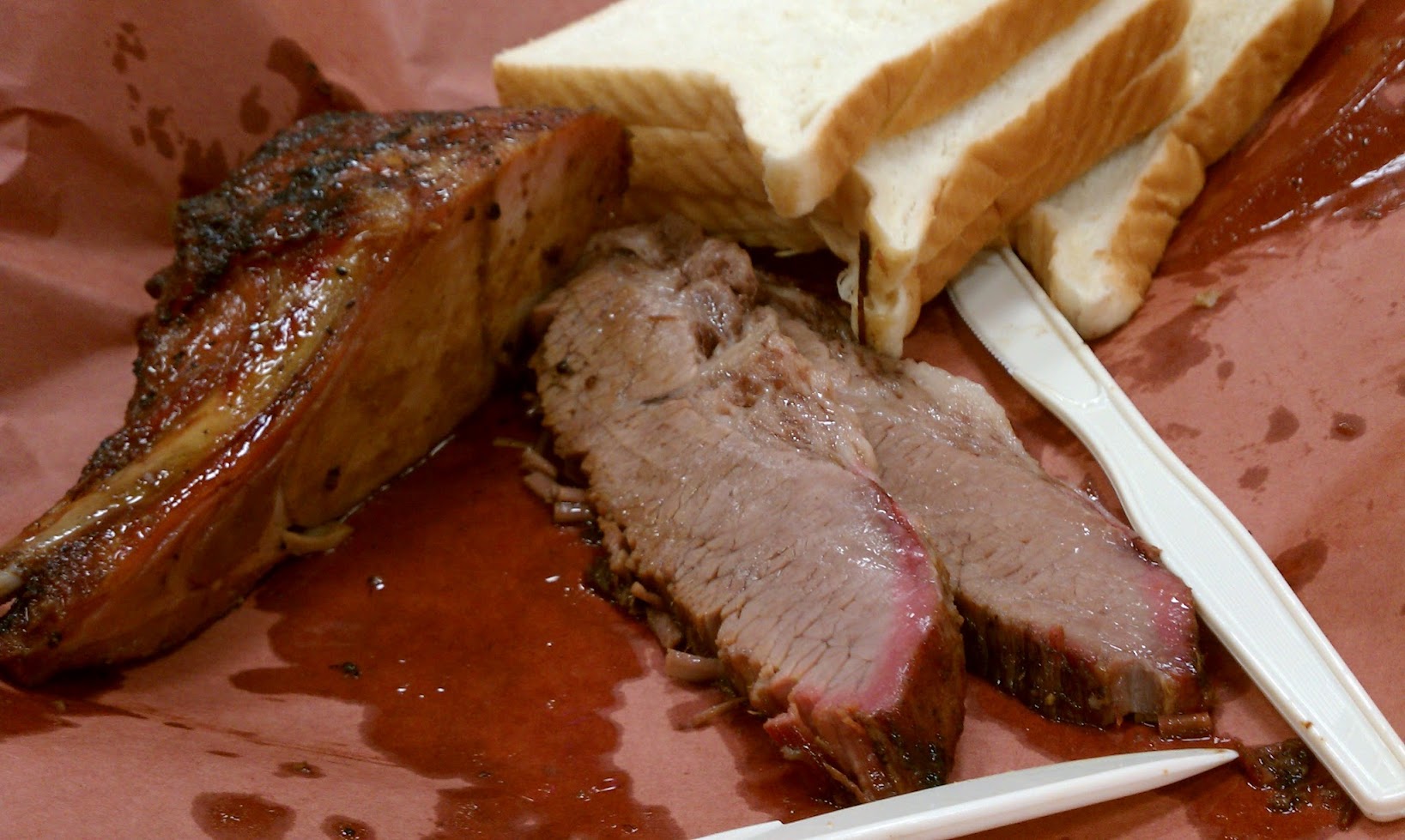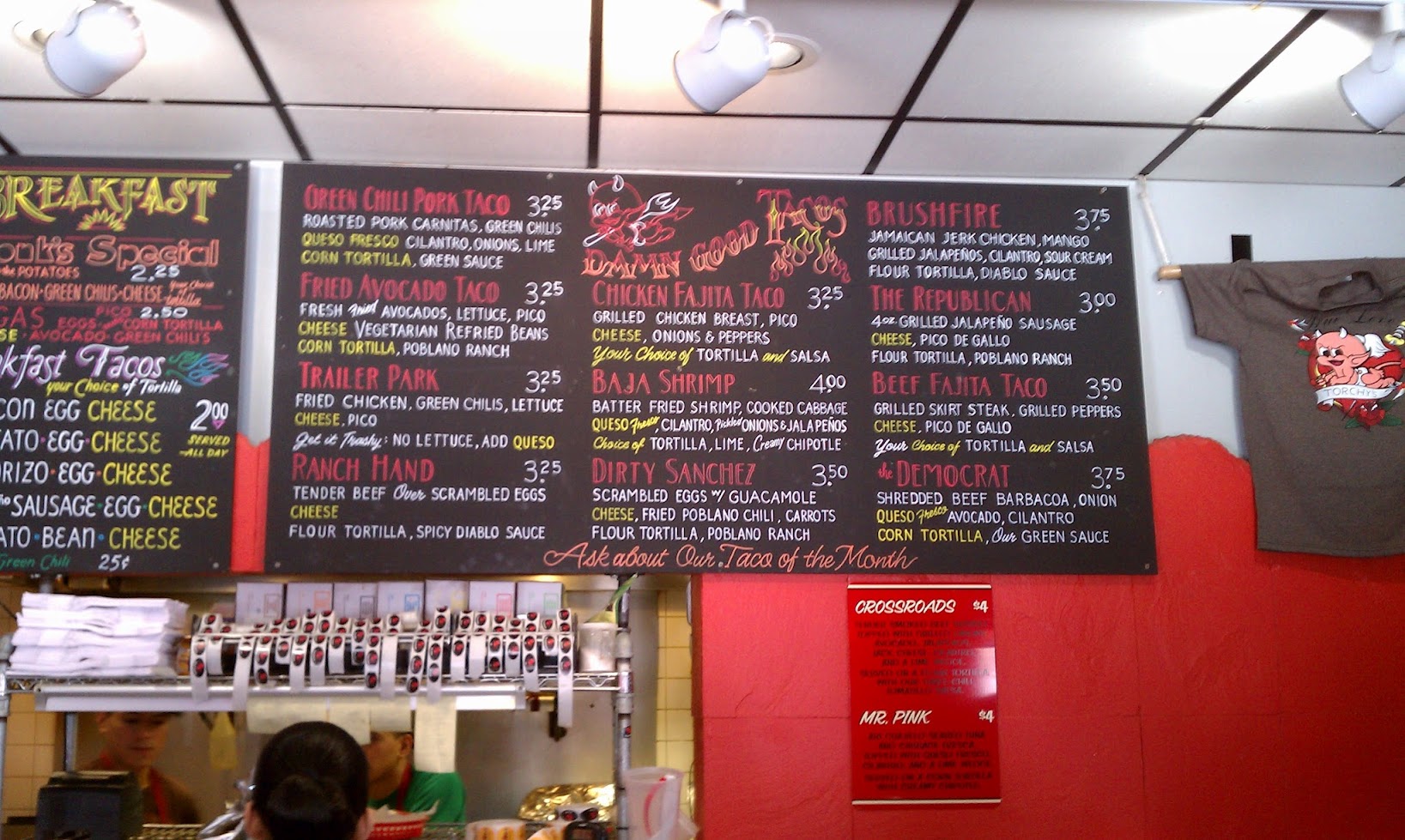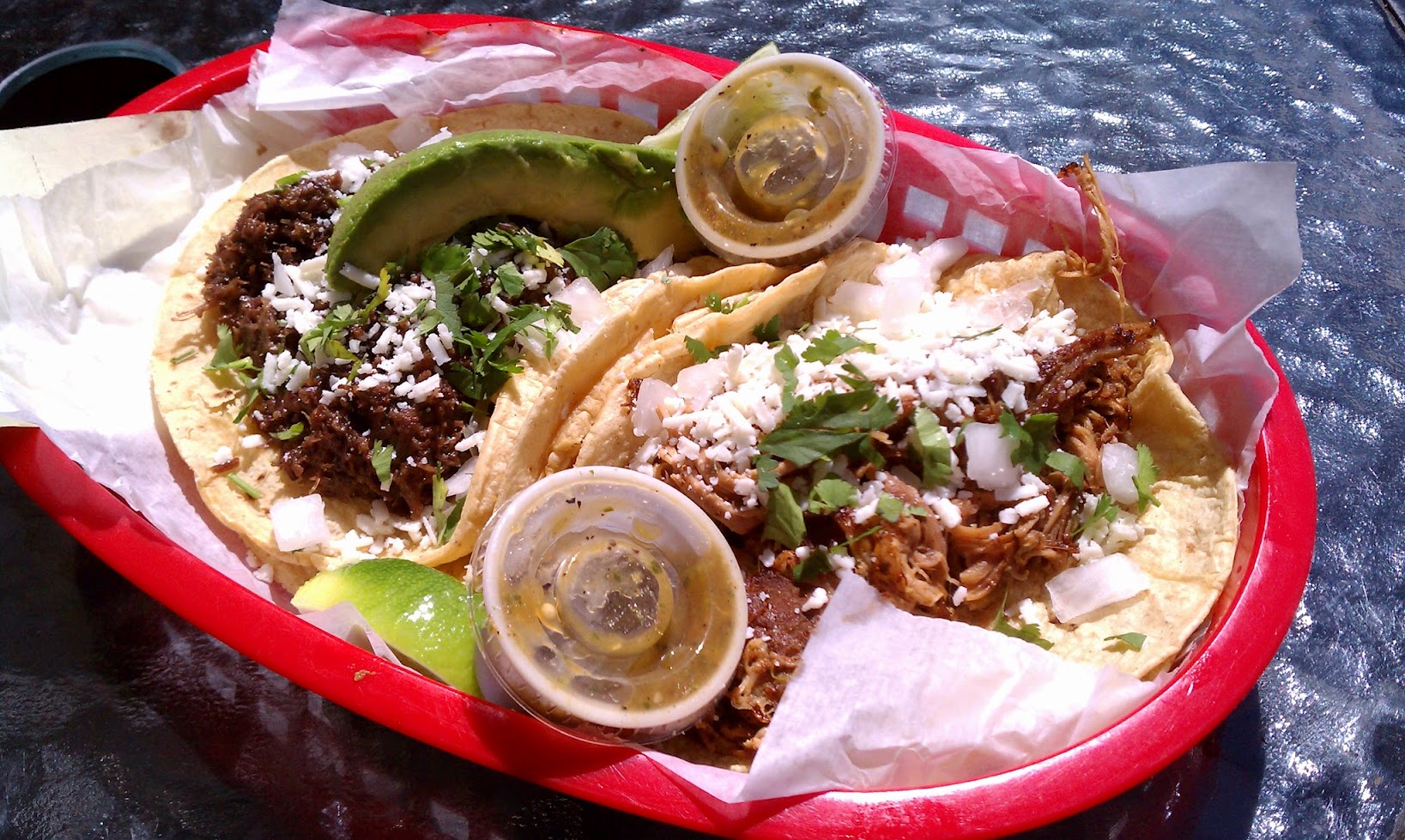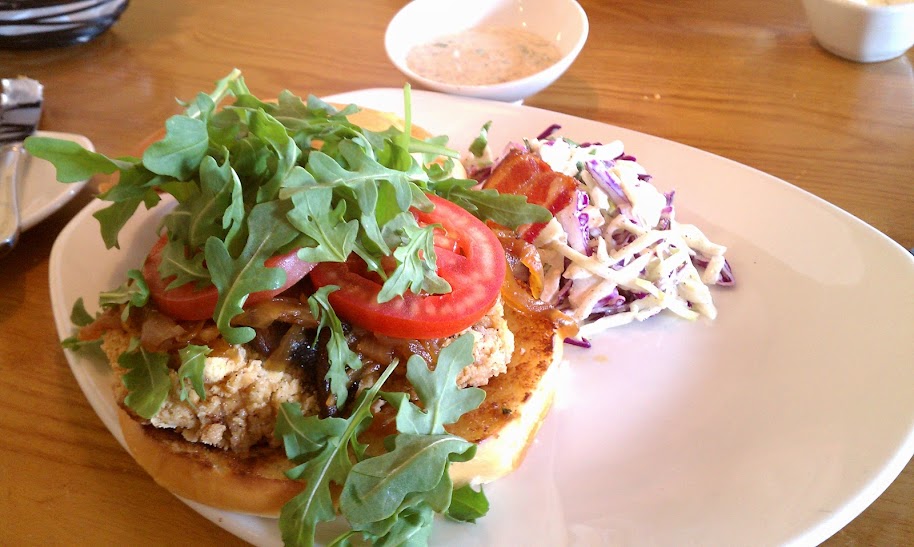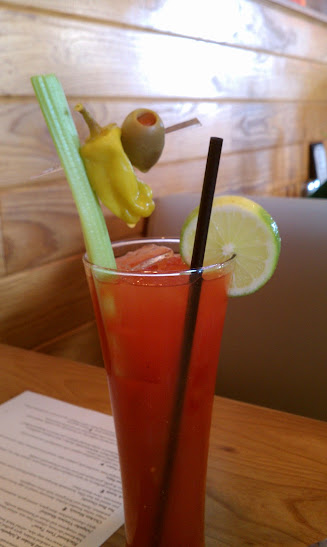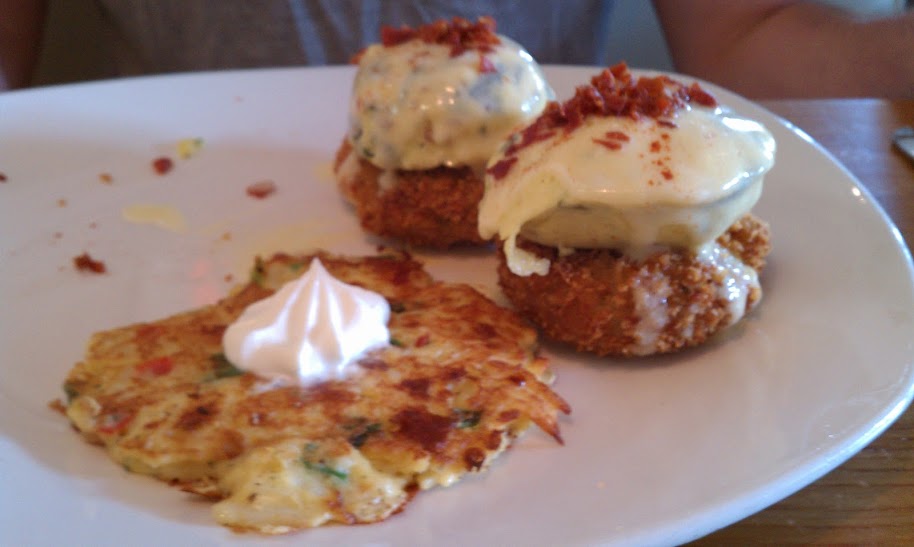 |
| TIME TO GLOW: Twilight descends on magical Istanbul |
She’d been hauled on stage by the compere, a dead-ringer for Kojak with a line of patter as smooth as his bald head and a radio mic for a lollipop. He couldn’t have been cooler if he’d stepped outside into the bone-chilling Istanbul night. Snow was the last thing I’d been expecting, but the city on the Bosphorus wore a light, white coat, much like the sprinkling of icing-sugar on the Turkish delight, profiteroles, buns and multi-coloured sticky candies in so many shop windows.
If Catriona learned anything that evening, it was this: when the belly dancing has finished and the lads who’d rushed to occupy the front row seats retreat to the back as soon as the karaoke’s announced, DO NOT sit where they’d just been sitting. This is good advice for anyone visiting Istanbul who wants to avoid singing one song while the band plays another, though to deny the audience such a perverse pleasure would be a shame.
 |
| BRA-VO: Me and my colleague Mark with belly dancer |
I don’t know why it’s called belly dancing, because all the action was taking place north and south of the three double-jointed, long-haired and beautiful Turkish dancers’ midriffs. It was like watching jellies in an earthquake. First they fluttered their unfeasibly-long eyelashes, causing a draught that nearly blew out all the candles on the tables. Then their shoulders and arms joined in, rising and falling like waves and sending ripples outwards to their long-nailed fingertips. When the tremors reached their boobs, which were acting independently of each other in what must have been reinforced bras, I was reminded of a boxer launching a flurry of left-right jabs and upper-cuts. The hips came next, and that was when things went right off the Richter scale — their pelvises couldn’t have shaken more if they’d been digging up the pavement with a pneumatic drill. Belly dancing is mesmerising, and you can see it in any of umpteen clubs and restaurants every night.
Earlier, while wandering through the Grand Bazaar, I was accosted by a one-legged man on crutches who was selling Turkish flags.
“I’m all right for Turkish flags, thanks,” I told him, so he showed me a selection of Zippo lighters, then some gaudy ‘gold’ rings. Seeing he was getting nowhere, he looked around and lowered his voice.
“I have Viagra,” he whispered.
“Cheerio!” I said, and scarpered.
 |
| DELIGHTFUL: Various flavours of Turkish delight and other types of sticky confectionery in the Spice Bazaar |
The Grand Bazaar is a tourist trap in more ways than one, so go armed with a map before entering this enormous indoor labyrinth of more than 4,000 shops lining 18 narrow streets or you’ll end up hopelessly, and in my case happily, lost. And be prepared for a relentless assault on the senses — the sights, sounds and scents will leave you giddy. If you’re a skinflint you can easily consume the equivalent of a three-course lunch by accepting the titbits offered by shopkeepers as you do the rounds, though Turkish delight for starter, main and dessert will leave you giddy too. Churchill and Napoleon loved the stuff and got through boxes of it like Ronald Reagan got through jelly beans, and Picasso pigged out on it to help him concentrate while painting, which may help explain his questionable grasp of anatomy.
Turkish delight has been around since the 16th century, but it was confectioner Haci Bekir’s introduction of beet sugar as a sweetener (honey and molasses had previously been used) and corn starch instead of flour in the late 18th century that produced the delicacy we know today. A wide range of confectionery is still made and sold in Bekir’s original shop, which he opened in 1777 in Istanbul’s Bahcekapi district. In the early 1800s an English tourist popped in and left with several boxes of Bekir’s famed jelly cubes, known in Turkey as lokum and available in flavours including strawberry, lemon, orange, mint and rose, which she took home and shared with her family and friends. In doing so, she introduced Turkish delight to western Europe and gave it its name. Bekir’s descendants run the business he established 235 years ago and are the proud owners of a royal warrant granted in perpetuity to their renowned ancestor — the sultan was a sucker for sweets and made him Chief Confectioner to the Ottoman Court.
 |
| BAARGAINS GALORE: Buy souvenirs in the Grand Bazaar |
Built between 1455 and 1461 and rebuilt and repaired several times since following earthquakes, the Grand Bazaar is the place to go for silk scarves, amber jewellery, kilim rugs, spices and the ubiquitous Turkish delight. One trader attracting a lot of chuckles, but no custom, from passing tourists was trying to entice them into his shop with the promise of “poison for the mother-in-law”. As his window display consisted of nothing but blades — everything from barber’s razors to secateurs to machetes — he couldn’t have been expecting many souvenir hunters. I was tempted to ask if he had any cut-price scissors, but thought better of it.
Don’t be shy about haggling, as it’s expected — prices in the Grand Bazaar are pitched high and open to negotiation — but be gracious. With a little bit of good-humoured huffing and puffing and rolling of the eyes you can expect to get at least a third, sometimes more, off the original quote. It’s a different story in the less blingy but no less colourful or noisy nearby Spice Bazaar, where the locals go to stock their cupboards with everyday aromatic cooking ingredients that Western visitors find exotic. The Spice Bazaar has its souvenir and jewellery shops too, but the prices on the labels are what you should pay.
 |
| VAC AND FORWARD: A cleaner, just visible, vacuums the enormous prayer carpet in the Blue Mosque, below |
I’ve no idea what the custodians of the Blue Mosque pay the guy who vacuums the carpet that covers the vast prayer area, but even with overtime it can’t be anywhere near enough. Next time you moan about doing the housework, spare a thought for the fella who walks countless kilometres every day behind his hoover. Visitors must remove their shoes before entering the mosque and carry them in plastic bags provided at the entrance. This can be a terrible distraction — while most people were wandering around looking up at the beautifully painted interiors of the main dome and cascading semi-domes, I looked down occasionally, trying to spot toes poking through holes in socks.
 |
| DOME-INATING: The magnificent cascading domes in the Blue Mosque |
Built between 1609 and 1616 on the orders of Sultan Ahmet I, the mosque gets its “blue” tag from the 21,000 Iznik tiles that adorn the walls. On completion it sported six minarets instead of the usual two or four, and its splendour caused uproar throughout the Muslim world. It was only when Ahmet sent his architect, Mehmet Aga, to Mecca to add a seventh minaret to the sacred Masjid al-Haram (Grand Mosque) that the outrage over the sultan’s perceived arrogance and sacrilege was assuaged. Ahmet, who was born in 1590, ascended the throne at the age of 14 as the 14th Ottoman sultan and ruled for 14 years. He’s buried in a mausoleum on the north side of the mosque with his second wife Kosem, who was strangled in the harem in Topkapi Palace, and his sons Sultan Osman II, Sultan Murat IV and Prince Beyazit, who was murdered by Murat.
If you’re lucky enough to be in the mosque at the right moment you’ll witness a light show like no other when the sun pierces the stained glass windows and casts the most amazing rainbow-hued rays. None of the original Venetian glass remains, but the effect from the more recent replacement panels is still astounding.
●Blue Mosque open 9am to 6pm every day (closed to non-worshippers during five-times daily prayers), admission free.
Step outside, stroll across Sultanahmet Square and enter the Hagia Sophia (Church of the Divine Wisdom) and you’re in for another treat. I’ve searched, and failed miserably, to find a worthy superlative for this almost 1,500-year-old behemoth of a building that’s considered the masterpiece of Byzantine architecture. Commissioned by Emperor Justinian the Great, it was first a cathedral (the biggest in the world for 1,000 years until Seville’s Saint Mary of the Sea, where Christopher Columbus is buried, was consecrated in 1507), then a mosque and, since 1935, a museum, and was completed in 532 after five years of construction that involved the labour of 10,000 men.
The main feature of the Hagia Sophia, and the main reason visitors keep apologising for bumping into each other (they should rename it the Hagia So Sorry), is the massive central dome — the fourth biggest in the world after Saint Paul’s in London, Saint Peter’s in Rome and the Duomo in Florence — that appears to hover above the nave thanks to the 40 clear glass windows around its base. Equally impressive are the fabulous mosaics on the walls depicting Christ, the Virgin and Child, saints and sultans, many of which are so detailed that at first glance they appear to be paintings, even when viewed up close.
The Hagia Sophia opened as a museum in 1935, four years after being secularised by Mustafa Kemal Ataturk, the founder of the Republic of Turkey and its first president who abolished the caliphate and whose photo is to be seen everywhere, indoors and out. If any man in recent history epitomised hero worship it was Ataturk, whose wide-ranging economical, social, educational, cultural and even sartorial reforms based on western mores were welcomed by the majority, except wearers of the fez, which he banned in 1925. Civil servants, however, happily went along with their Panama-wearing chief’s insistence that they don fedoras or derbies.
 |
| HERO: Turkey's first president, Mustafa Kemal Ataturk |
●Hagia Sophia open 9am to 7pm, except Monday, admission 20 lira (€8.50).
The Basilica Cistern, a couple of minutes’ walk from the Hagia Sophia and completed in the same year, is the biggest of several reservoirs beneath Istanbul and featured in the 1963 James Bond movie From Russia With Love in which 007 (Sean Connery) is sent to the city to help Soviet consular clerk Tatiana Romanova (Daniela Bianchi) defect to the west. It was also a location in the 2009 crime mystery The International, starring Clive Owen and Naomi Watts.
The cavernous cistern, which can hold 100 million litres of water and was fed by a series of tunnels and aqueducts running 20 kilometres from the Belgrade Forest north of the city, is Istanbul’s weirdest tourist attraction. It’s not every day you pay to visit a subterranean water depository, but this is fascinating, not least because of the forest of 336 eight-metre high marble and granite columns with Ionic, Corinthian and Doric capitals that support the ceiling and were brought from throughout the Byzantine empire. Amber lighting, classical music and the echoing plink-plonk of dripping water create a calming atmosphere away from the hustle and bustle of life above ground, but there’s still fun to be had — for €5 you can dress up as a caliph or a concubine and have a quirky souvenir photo taken.
 |
| WET TILL YOU SEE THIS: Some of the 336 columns that support the sixth century Basilica Cistern beneath the city |
●Basilica Cistern open 9am to 7.30pm every day, admission 10 lira (€4.25).
 |
| THREE 'WISE' MEN: Me and colleagues Mark and JP dress up and pose for a photo in the Basilica Cistern |
The Hippodrome was the scene of one of the most violent episodes in Istanbul’s history when, during the week-long Nika Revolt in January 532 that was sparked by festering resentment at crippling taxes, Justinian’s royal palace came under siege and half the city —including the Hagia Sophia — was destroyed or damaged by fire. Fearing he would be overthrown, the emperor brought the uprising to a bloody end when he sent his troops and a force of mercenaries into the Hippodrome where 30,000 Greens supporters had gathered and put them all to the sword.
Only three ancient monuments remain of the many that lined the spina. The 20-metre red granite Egyptian Obelisk, made around 1500BC, stood in Karnak, just outside Luxor, until 357 when the Emperor Constantine had it removed to Alexandria to celebrate the 20th anniversary of his rule. In 390 Theodosius I had it brought to Istanbul (then Constantinople) where it was placed on a five-metre marble pedestal whose four sides are decorated with scenes depicting Theodosius watching the obelisk’s erection, viewing a chariot race, preparing to honour the winner with a laurel wreath and receiving the submission of the Barbarians. The inscriptions in Latin and Byzantine Greek on the east and west faces of the pedestal’s base use a lot of fanciful words to say “this column was erected in a month”, though the Latin cites 30 days while the Greek puts it at 30. On the four sides of the obelisk itself, which was made for Pharaoh Tutmoses III, are hieroglyphs celebrating his victory in battle at the Euphrates in 1450BC.
 |
| DROME MAJOR: The 3,500-year-old Egyptian Obelisk was the major and oldest feature of the Hippodrome |
The five-metre bronze Serpentine Column which was brought from Delphi in 324 looks like something you’d see in a modern art gallery, but it dates from 479BC and was made to commemorate the Greeks who gave the Persians a bloody nose at the Battle of Plataea in the same year. Two of the heads of the three intertwined serpents are long lost, but one is on display in the nearby Museums of Archaeology.
Of unknown date, though probably erected in the fourth century, the 32-metre Column of Constantine Porphyrogenitus is named after the Byzantine emperor who restored it in 944 when its four faces were covered with bronze relief panels. The panels, celebrating the victories of the emperor’s grandfather, Basilios I, were looted and melted down to make coins in 1204 during the Fourth Crusade when the Venetians sacked the city. Unlike the single-piece and glass-smooth Egyptian Obelisk, this column is made of 300,000 roughly-hewn limestone blocks around an iron core, and in its unclad state it was routinely climbed by teenage boys as a test of their bravery and to show off to young women. Unfortunately, falling for a girl in those days — sometimes from a great height — invariably resulted in broken bones as well as broken hearts.
 |
| ALL OF A TWIST: Remains of the Serpentine Column with Egyptian Obelisk in the background |
Topkapi Palace, built between 1459 and 1465 on the elevated Seraglio Point promontory under the rule of Mehmet II, was the main residence of the Ottoman sultans until 1853 when Abdul Mecit I abandoned it in favour of the European-style Dolmabahce Palace. In 1924, Topkapi opened as a museum and is today one of the highlights of a visit to Istanbul, not least for the treasures, holy relics and lavish costumes on display. Curiously, the sleeves on some regal tunics are two metres long, so the sultans must have been the star players on the palace basketball team, the Harem Globetrotters.
Rather than a single grand structure, Topkapi is a somewhat disharmonious ensemble of mainly two-storey buildings, courtyards, gardens and pavilions filled with birdsong and the sound of tinkling fountains. As each new sultan ascended the throne he expanded the palace, and further additions were commissioned to celebrate battle victories and, no doubt, match-winning slam dunks. As the empire grew, so too did the palace, especially during the reign of Suleyman (1520 to 1560) who wanted Topkapi to reflect his increasing power and influence. Despite the absence of the symmetry seen in so many royal residences it is nevertheless a masterful mix, and at least three hours should be allowed to make the most of what will be a memorable visit.
 |
| TOP ATTRACTION: Topkapi Palace from the Bosphorus |
Foremost among the treasures on display are the 86-carat Spoonmaker’s Diamond and the Topkapi Dagger. Legend has it that the former, which is drop-shaped and surrounded by 49 other diamonds, was found in a 17th century rubbish dump and came into the possession of a scrap dealer who sold it for three spoons. The 35-centimetre curved dagger, in a gold sheath studded with precious stones, has three large emeralds from the Somondoco mines in Colombia on one side of the handle and a diamond encrusted chain. Sent as a gift by Sultan Mahmut I to the Shah of Persia in 1747, it never reached him — Nadir Shah was assassinated by one of his bodyguards and it was returned to the palace. The dagger is the subject of the 1964 heist movie Topkapi starring Peter Ustinov (he won an Oscar as Best Supporting Actor), Melina Mercouri, Maximilian Schell and Robert Morley which inspired the long-running TV series Mission: Impossible.
Relics on display include a mantle worn by the Prophet Mohammed, hairs from his beard and a tooth, two of his swords and an impression of his footprint. Visitors can also see a case containing a hand, arm and pieces of the skull of John the Baptist, Moses’ rod (the one that turned into a snake, not the one he used for fishing).
●Topkapi Palace Museum open 9am to 7pm, except Monday, admission 20 lira (€8.50) plus 15 lira (€6.35) to visit the harem.
 |
| HOUSE MUCH? Some of the multi-million dollar riverside homes, called yalis, along the Bosphorus shore |
The Bosphorus, which splits Istanbul in two and separates Europe from Asia while connecting the Black Sea and the Sea of Marmara, is one of the busiest waterways in the world and one of the most difficult to navigate because of the currents and several blind spots. However, visitors who embark on a sightseeing cruise on any of the scores of public ferries or private-hire pleasure craft are in the safe hands of skippers and crew who go up and down here several times a day.
There’s as much to see from the water as there is on land, plus the thoroughly satisfying bonus of seeing those appalling bores who never tire of boasting about how much they sold their houses for being stunned into wide-mouthed silence on learning the asking prices for many of the waterside properties. Ten million dollars will buy you a baronial castle with a couple of thousand acres of grouse moor in the Scottish Highlands; for $20 million you’d get a salmon run plus a team of ghillies and the right to call yourself a laird thrown in; but some of the wooden-panelled shoreline homes known as yalis along the Bosphorus are valued at upwards of $50 million, so unless your surname’s Abramovich, Onassis or Rockefeller you can keep on dreaming.
●Half-day Bosphorus cruises operate every day, from 70 lira/€30 (children 48 lira/€20). Full-day tours including lunch/dinner and refreshments also available.
 |
| SULTANS OF BLING: The fabulous Dolmabahce Palace and, below, the bed in which the revered Ataturk died |
The 285-room Dolmabahce Palace is the star of the show — or rather, the shore — when you go cruising. Built between 1843 and 1856 by Abdul Mecit I when the Ottoman Empire was in decline, it was financed with loans from foreign banks and occupied by six sultans until the establishment of the republic. A mix of oriental and western styles, it contains more than 600 paintings and the world’s biggest Bohemian crystal chandelier, weighing 4.5 tonnes and containing 70 lamps, which was a gift from Britain’s Queen Victoria. The room and the bed in which Ataturk died are preserved exactly as they were, and the hands on the clock have remained fixed at 9.05am, the hour when he drew his last breath at the age of 57 on November 10, 1938.
The palace can only be viewed as part of a guided tour. Two official tours run throughout the day, one taking in the Selamlik containing the state rooms and the Ceremonial Hall, and the other the harem. The first is the best, though there’s nothing to stop you doing both.
●Dolmabahce Palace open 8.30am to 4.30pm, except Monday and Thursday, admission 10 lira/€4.25 (harem), 15 lira/€6.35 (Selamlik), 20 lira/€8.50 (both).
Other places to visit, depending on your schedule, are the Archaeology Museums, the Galata Tower for panoramic views, Miniaturk (a park displaying scale models of famous buildings from Turkey and throughout the world), the Toy Museum, the Ural Ataman Classical Automobiles Museum and the Rumeli Fortress Museum where open air concerts are staged in summer.
Mosques, monuments and museums aside, simply being in Istanbul — wandering the bustling boulevards, streets and alleyways of this remarkable multi-cultural metropolis where east meets west and modern meets ancient — is a sensory experience that almost has the skin tingling with excitement. Granted, the snow and sleet and biting winds of February had my skin tingling with the cold and my hands turning as blue as those Iznik tiles, but it was a small price to pay for the privilege of spending time in the city that 14 million people call home. If it can get a frozen thumbs-up in the middle of winter, imagine how much more enjoyable it must be on a warm and sunny summer’s day.
Nothing, though, will ever come close to the enjoyment of listening to karaoke queen Catriona trying to compete with Supercalifragilisticexpialidocious — even though the sound of it was something quite atrocious.
 |
| BRIDGE OF SIZE: One of the two soaring suspension bridges that carry traffic across the Bosphorus |

















